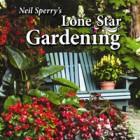Wild About Texas – October, 2007
Gardens on Tour 2005
Presented by the Lady Bird Johnson Wildflower Center
Austin, TX – On Saturday, May 7, from 10am to 5pm, Gardens on Tour 2005 Presented by the Lady Bird Johnson Wildflower Center will take an exclusive look at gardens that include native plants. This self-guided, Mother’s Day weekend tour will introduce gardening enthusiasts to six private gardens, plus the Lady Bird Johnson Wildflower Center.
Rain or shine, visitors will enjoy the beauty of six gardens that convey unique designs and showcase native plants. Docents, landscape designers, and gardeners will be on site at each home to answer questions and provide information about each garden.
Gardens include: 4901 Beverly Skyline, 3414 Foothill Terrace Circle, 7202 Foxtree Cove, 3604 Windsor, 3612 Windsor, 2205 South 2nd Street, and the Wildflower Center.
Tour wristbands are available starting April 4 at Wild Ideas: The Store, Barton Springs Nursery, The Natural Gardener, and Shoal Creek Nursery, or individual garden tickets may be purchased on-site at each home the day of the event. Passes for all gardens are $25, and each individual garden is $6. Children under 5 will be admitted free of charge. The proceeds from this event will allow the Wildflower Center to offer a broader range of public programming for youth and families.
For more information on Gardens on Tour 2005 or additional information on the Center, call (512) 292-4200 or visit www.wildflower.org.
Saving Seeds
As we progress into May, many of us who have been blessed with a glorious patch of Bluebonnets (Lupinus sp.) become doleful as the crisp cerulean blossoms fade to dull seed pods.
But wait, don’t run for the lawnmower quite yet! If you want to continue the display for next year, you must allow the pods to ripen. Bluebonnet seeds usually mature six to eight weeks after flowering. Pods are ripe when they reach full size and turn yellow or brown. At full maturity, the pods will split in half, like peas, and the dry seed will be released. Harvesting or mowing too early will result in much fewer finished seeds and ultimately fewer plants that will germinate in fall.
If you choose to harvest your seeds to create a patch in a new location or to share with a friend, collect the pods at the earliest when they have reached mature size and have begun to turn color. The window of time between this stage and when the seeds drop is relatively short, a couple of weeks, so be attentive. Once you have picked the seed pods, leave the pods intact but remove them from the rest of the plant. At this point, you may spread them out on a tray or store them loosely in a breathable container, such as a paper bag, until they are fully dried or “cured.” For longer-term storage (i.e. until sowing time in August or September) find a cool, dry, and dark location. The biggest threats at this point are fungi, and weevils or other insects that will eat the seeds. To prevent mildew, make sure the seeds are fully dried before storing. Discourage insect pests by keeping the seeds in an airtight container.
And finally, before you put the seeds on the shelf and out of your mind until planting season, be sure to label the container with the name of the plant and date of harvest. I can’t tell you how many times I’ve opened a bag of unmarked seed and found myself frustrated and utterly clueless as to the contents! And, although bluebonnet seed can last a few years in proper storage before losing viability, a date is nonetheless helpful when you find yourself rummaging through ancient boxes of stored seeds!
About the author: Andrea DeLong-Amaya is Director of Gardens at Lady Bird Johnson Wildflower Center in Austin. For more information, visit www.wildflower.org.

